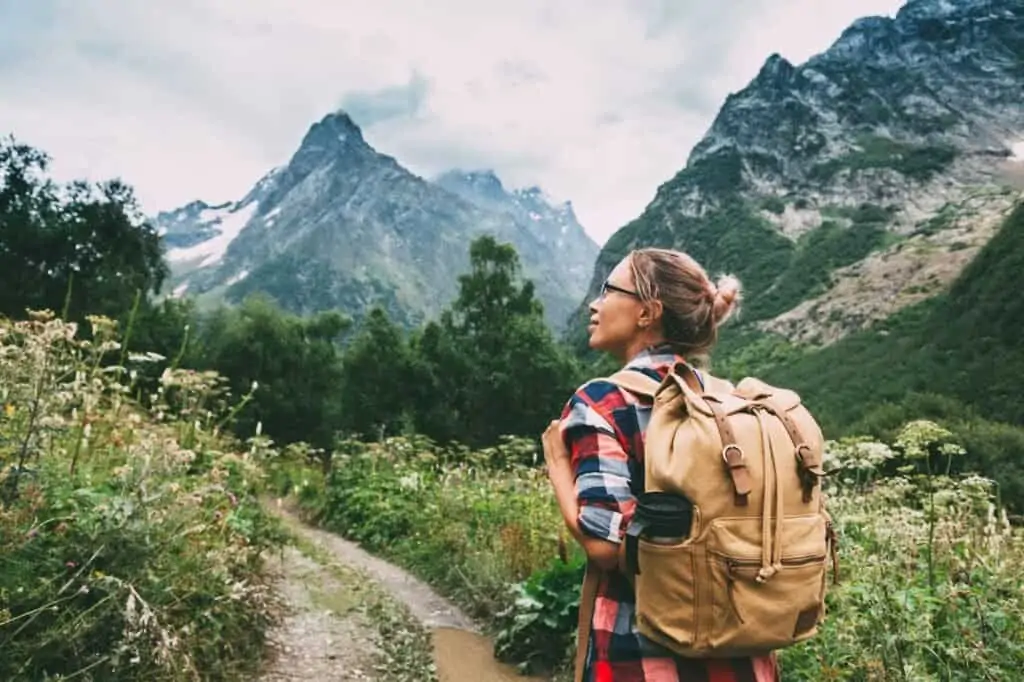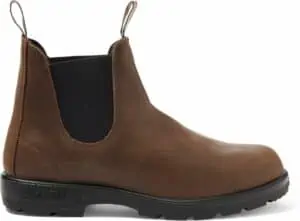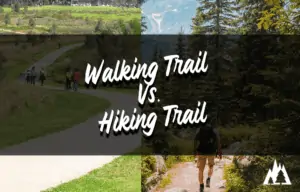How to Pack a Backpack For Hiking

You’ve spent weeks packing everything you need for the trip. But have you thought about how to pack a backpack properly for your hike?
This article will give some tips and tricks that should help guide any hiker on their adventure with ease.
As any hiker will tell you, your backpack is everything. As well as carrying all your camping gear and other packing checklist essentials, it doubles up as a pillow and serves as a reminder of all the places you’ve traveled to and trekked through.
But, while your trusty backpack represents everything you love about the great outdoors, it can also be your biggest burden – especially if you don’t know how to pack well. Whether you overload your backpack in eager preparation for your first camping trip or pack too light and live to regret it, packing mistakes can make your hike harder and a lot less enjoyable.
That said, although there’s an undeniable art to packing well, it’s nothing that you can’t learn with our guidance.
So, how do you pack a backpack for hiking? Keep reading to find out!
Selecting Your Backpack and Essentials Packing Accessories
Before you make a list of camping gear you need or decide what clothing to bring, it’s time to select a backpack for your hiking trip. But, not just any backpack will do. Here are some pointers to explain what you need to look for in the perfect backpack, as well as other accessories that will come in handy:
Choose a Backpack Designed for Hiking
Most of us have a backpack or two lying around at home. But that cheap canvas model you got for a few bucks won’t cut it for a hiking trip, even if you only plan on going away for one or two nights. Outdoor camping gear can get heavy, especially in winter, so you need a comfortable, purpose-built bag to lighten your load and make the journey easier on your body.
What’s more, a well-chosen backpack will be a lot easier to pack well for a hiking trip, since it’s designed for the purpose. Key features to look out for in modern backpacks include an internal rigid frame, comfortable shoulder straps, external compartments, a waterproof rain cover, and a padded hip belt.
Select the Right Capacity Backpack For Your Trip
The capacity you choose will depend on the length of your hike, as well as how much of a light packer you are, and whether you need to take any special equipment. But, as a guide, the right capacity for the trip length is as follows:
- 20-50 liters – Overnight Trip (1-2 nights)
- 50-60 liters – Weekend Adventure (2 to 3 nights)
- 60-80 liters – Multi-Day Excursion (3 to 5 nights)
- 80+ liters – Extended Tour (5 or more nights)
Often, people on their first camping trip tend to overdo it with the creature comforts while parents hiking with kids will often need as much extra space as possible. In contrast, more experienced hikers can often bring all the camping essentials they need and still come in well under the capacity recommendations.
Invest in Extra Backpacking Gear to Make Packing Easier
It’s not just a well-chosen backpack that makes packing easier. Some extras that will simplify the process include:
- Compression Sacks: These are super handy for bulky camping gear such as your sleeping bag and pillow. But, they also work well for minimizing the amount of space your clothing takes up in your backpack. All you need to do is stuff the sack full and pull on the compression straps to suck out all the air. You’ll then free up a ton of space for snacks and other essentials!
- Reusable Gear Ties: If you don’t already have a bunch of these at home, you’re seriously missing out. Reusable gear ties are great for tying up just about anything but they’re especially useful for outdoor camping as they can hold up protective tarps, keep wires neat, and even offer a quick fix for broken ties and equipment.
- Accessory Straps: While you can use gear ties to attach odd-shaped items to your backpack, accessory straps are better for tying down bulky camping essentials such as sleeping pads to the outside of your backpack.
- Waterproof Bags: It can be tempting to use Ziploc bags to keep your gear dry, but investing in waterproof bags made for hiking and other outdoor pursuits is always the best way to protect your phone, solar charger, keys, map, and other items from getting wet.
While not everyone would consider these hiking and camping essentials, anything that makes the process of packing a backpack more streamlined is a must-have in our book!
How to Pack a Backpack: Packing ABC
It’s a lot easier to approach packing your backpack when you have a clear idea of what needs to go where in your backpack and why. And the key to that is learning your packing ABC: access, balance, and compression.
Keeping these three aspects in mind will help ensure that your backpack is comfortable, easy to carry, and has everything you need within reach. So, how can you tick all the boxes when packing for a hike? Let’s take a look.
Aim for Easy Access
Access is all about considering which items you’ll need to reach for throughout the day and which items you can safely tuck away to pull out when you stop for the evening. Whether you prefer to write a packing checklist or lay everything out in front of you, dividing the items up according to how often you’ll need to access them during the hike will help you decide where to store them.
The items you’ll use first or most will then need to go in easy-to-access pockets. Organizing your items like this ensures that you won’t have to rummage around through your whole pack every five minutes. Regardless of their weight, you should place them in external pockets or zip them up in the top compartment. Common frequent-access items include:
- Bathroom kit (toilet paper, hand sanitizer, shovel, bag for used toilet paper)
- Water filtration system
- Snacks
- Sunscreen
- First aid kit
- Headlamp
If there’s a possibility that it might rain, you should also keep your rain jacket in an external pocket for easy access. Storing it away from other items also helps stop your other items from getting wet when you stash your rain jacket back in your backpack after a downpour. On the other hand, if there’s no chance of rain, save the easy-access compartment for something more weather-appropriate, such as sunscreen, and store your rain jacket toward the bottom of your pack.
As for any smaller on-the-go hiking gear and camping essentials, such as a knife, whistle, and compass, your pack may include built-in hip belt pockets for storing these. If not, place these in your pants pockets or in your pack’s side pockets.
With all your high-access gear set aside, you can then focus on how you’ll pack away the items you won’t need until later. These might include food, your campfire cooking kit, and food storage items. But, to distribute these bulkier items throughout your pack for maximum comfort and minimum effort, you’ll also need to get the balance right.
Balance and Weight Distribution
Stuffing all your camping gear in your backpack might seem like a triumph. But it’ll be a hollow victory if you can’t take more than a few steps when it’s loaded onto your back. For this reason, you should never try to carry a backpacking pack that weighs more than a third of your body weight. Of course, a badly-packed backpack weighing a lot less can also be a struggle to carry if you haven’t balanced the inner load well.
Many people make the mistake of placing heavy items at the bottom of their backpacks and lighter items toward the top, affecting their center of gravity. This packing technique works well to avoid squashing the bread or breaking the eggs when bagging groceries at the store. However, packing a backpack calls for a different approach.
Since you carry a backpacking pack close to your body, you should place the heavier items in the center and toward the top of your main backpack compartment to make the task a lot easier. You also want the heaviest items as close to your back as possible. Distributing your backpack’s weight this way directs the load downward rather than backward, ensuring more stability and comfort while you’re hiking with it on your back.
While it might seem counterintuitive, your softest camping gear should go at the bottom of your backpack. As well as being items you’re unlikely to use until the end of the day, your sleeping bag and other lightweight items offer the perfect base for a balanced load that’s as easy to carry as it is to access what you need when you most need it.
As a rough guide, your backpacking gear order (going from the bottom to the top of your pack) might look something like this:
- Sleeping bag
- Sleeping pad
- Clothes (these are also useful for wrapping around loose items in your backpack to keep things packed together and in place)
- Water bladder (if your backpack has a special compartment for water, it will most likely be in the core area of the pack toward the back)
- Stove
- Tent
- Food (a lot of the best outdoor camping food supplies, such as cans, nuts, seeds, dried fruit, and nut butter, end up being some of the heaviest items you’ll bring on a backpacking trip)
When packing, you’ll also need to consider horizontal balance as well as vertical for optimal comfort, support, and ease of carrying. For example, loading cans on the left side and protein bars on the right will make the left side of your backpack much heavier than the right side. As a result, you’ll feel your pack pull you to the left as you move. To avoid this from happening, remember to load up items of a similar weight across your backpack.
Compress For Success
By now, you will have a clear idea of the camping gear you’ll need and where it should go within your backpack. Now, it’s time to compress for success by stabilizing and consolidating your load.
This process is a lot easier to do if you’ve invested in the compression sacks we mentioned earlier. As well as helping to keep specific camping gear items together, these create manageable building blocks of kit to fill your backpack with. Ideally, each of your sacks should be a different color to tell them apart with a quick glance. Light and bright colors work best for this purpose as they’re easier to identify even when they’re inside your pack.
Once your blocks are in place, you can then consolidate your backpack’s interior further by stuffing loose items into the gaps between them. Clothes work well for this purpose as they’re soft and malleable but big enough to stop items from shifting from around while you walk.
While loading up your backpack, the compression straps on the outside should be loose. But, once everything is in place, you’ll need to tighten these to pull everything together. Doing so ensures that everything stays as close to your center of gravity as possible, making for a safe, comfortable, and stable hike.
You should also tighten the side compression straps to make the fit super snug and help minimize empty spaces created in hard-to-pack places. Then, as a final step, join the top compartment of your backpack to the main compartment by tightening and buckling the top compression straps. This will stop the top compartment from bumping you in the back of the head while you walk.
What is Backpacking?
Backpacking is a form of hiking that includes both the use of backpacks and secluded areas. It’s normally something that’s done in groups, but sometimes, it’s just one person. Backpacking is also an affordable option for people who want to enjoy the wilderness.
What is a backpack?
A backpacking pack is an item worn on someone’s back that can be used to carry food, water, clothing, and any other material for a hike. A person who goes hiking normally has a backpack with them so they have things to keep themselves going throughout the day or night. It also makes it easier for people to hike together as they can share their supplies with each other if needed.
Backpacking safety tips:
Don’t drink water from lakes or rivers. Many fish swim in those lakes or rivers, which means there could be parasites that you don’t want to ingest.
Make sure you have a map of the area, as well as a compass or GPS if possible. If there’s no service on your phone, take some paper maps with you so you can easily navigate through the area.
When camping, choose an elevated site and try to stay away from known animal paths and food sources. Bears and other animals don’t like people any more than we like them; they’ll rip apart tents and look for snacks if they can find food in campgrounds.
Secluded areas are areas where hardly anyone ever goes to. They’re generally far away from civilization and people will often spend days at these locations without seeing another person, which is why it’s important for backpackers to stay safe while they’re secluded. The longer you choose to be secluded the more precautions you need to take.
What are some benefits of backpacking?
Backpacking is a cheap way for people to enjoy nature. If you just look up national parks that offer camping in the US, then costs won’t be much because most campsites are free or very cheap.
People can hike together if they want, but there are also plenty of trails that only allow one person.
In addition to being a cheap way to enjoy nature, backpacking is also good exercise and it’s an easy way for someone who hasn’t been outside much to get some fresh air and exercise that’ll be beneficial to their health.
What are some safety tips for backpackers?
- Wear comfortable shoes with sturdy ankles. It isn’t worth ruining your vacation because you were wearing sandals or flip-flops as far as footwear goes. Strong footwear is necessary so you can walk comfortably without spraining your ankle or getting blisters from ill-fitting shoes. Flip flops have the potential of causing all kinds of problems if they’re worn on long backpacking trips.
- Wear layers at night, not only because it’s colder away from civilization, but also to protect yourself against mosquitoes and other insects if necessary.
- Make sure you have a well-stocked first-aid kit so you can help yourself or your group if they get hurt on the hike. You don’t want someone having to go back home just because they got a thorn in their foot and didn’t bring something to take out the thorn with.
- Last but not least, make sure your hiking backpack fits properly to prevent any back issues.
Summary
As this guide shows, learning how to pack a backpack for a hiking trip, no matter how short, needs more precision than many people might realize.
But, with a well-chosen backpack, handy accessories, and a clear idea of what goes where and why you will be able to learn how to pack a backpack like a pro in no time.
Want all the latest outdoor gear reviews and expert travel advice, straight to your inbox? Make sure to subscribe to our newsletter for regular updates! Or, if you have a question or suggestion, feel free to contact us at Rep the Wild today!






